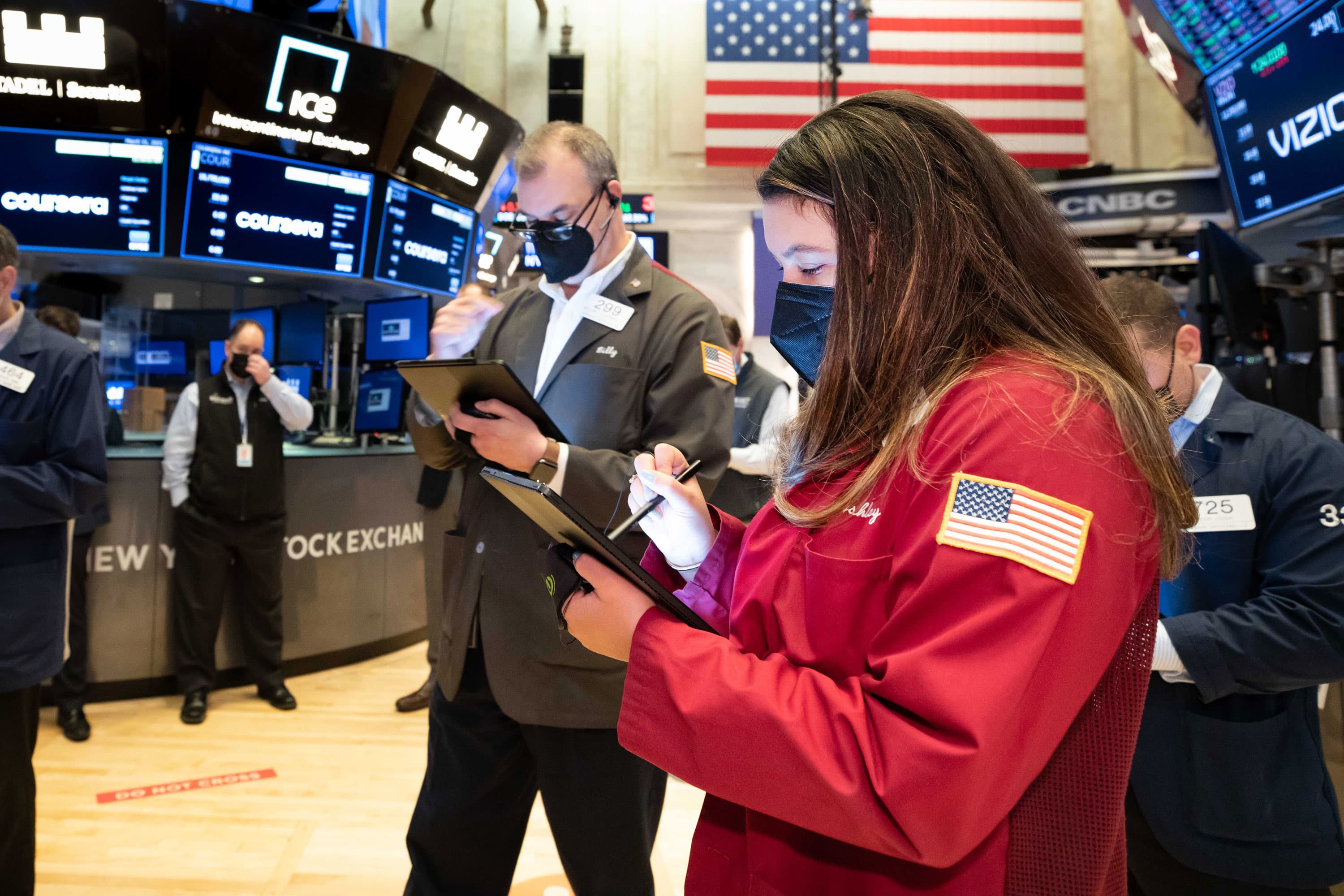Stocks are little changed despite strong readings for home prices and consumer confidence

The S&P 500 notched another record high on Tuesday amid bullish economic data but retreated later in the session as Wall Street continued its recent period of low volatility.
The broad market index was down less than 0.1% in afternoon trading. The Dow Jones Industrial Average was flat after being up more than 100 points earlier in the session, while the tech-heavy Nasdaq Composite ticked up less than 0.1%.
Homebuilder stocks moved higher after S&P CoreLogic Case-Shiller said home prices rose more than 14% in April compared to the prior year. Five U.S. cities, including Seattle, saw their largest annual increase on record. Shares of Lennar and PulteGroup rose 1% and 2%, respectively.
Semiconductor stocks gained strength later in the session, with Skyworks and Advanced Micro Devices climbing 4.2% and 2.9%, respectively. General Electric boosted the industrials sector, rising over 1% after Goldman Sachs named the stock a top idea. Mining stock Freeport-McMoRan also added more than 1%.
The market has churned out a series of record highs in recent weeks, but the gains have been relatively modest and some strategists have pointed to weak market breadth, measured by the performance of average stocks and the number of individual names making new highs, as a potential area of concern.
On Tuesday, the S&P 500 was split roughly in half between gaining and declining stocks.
However, the diminished breadth and volatility could simply be a natural pause during the summer months ahead of the busy part of earnings season, said Bill McMahon, the chief investment officer for active equity strategies at Charles Schwab Investment Management.
“I think people are in a little bit of a wait-and-see mode, so it’s not surprising to see volatility decline and breadth worsen a tad,” McMahon said, adding that concern about the spreading Delta variant of Covid-19 could also be weighing on stocks.
Shares of Morgan Stanley jumped more than 3% after the bank said it will double its quarterly dividend. The bank also announced a $12 billion stock buyback program. The announcement follows last week’s stress tests by the Federal Reserve, which all 23 major banks passed. However, some other bank stocks gave up early gains and weighed on the broader indexes despite increasing their own payout plans.
With the market entering the final trading days of June and the second quarter, the S&P 500 is on track to register its fifth straight month of gains. The Nasdaq is pacing for its seventh positive month in the last eight. The Dow, however, is in the red for the month, and on track to snap a four-month winning streak.
Through Monday’s close, the S&P 500 was up 14% and the Dow and Nasdaq were up 12% so far for 2021.
JPMorgan quantitative strategist Dubravkos Lakos-Bujas said on CNBC’s “Squawk Box” that the market appeared to have near-term upside.
“The growth policy backdrop in our opinion still remains supportive for risk assets in general, certainly including equities. At the same time, the positioning is not really stretched to where we are in a problematic territory. So we do think there is still a runway. … The summer period, the next two months, is where I think the market continues to break out,” the strategist said.
The Conference Board’s consumer confidence reading for June came in higher than expected, adding to the bullish readings about the economic recovery.
On Monday, the S&P 500 and Nasdaq closed at record highs thanks to a strong performance from Big Tech stocks. The Dow, however, dipped 151 points amid a pullback in Boeing and Chevron, among other names.
Become a smarter investor with CNBC Pro.
Get stock picks, analyst calls, exclusive interviews and access to CNBC TV.
Sign up to start a free trial today




